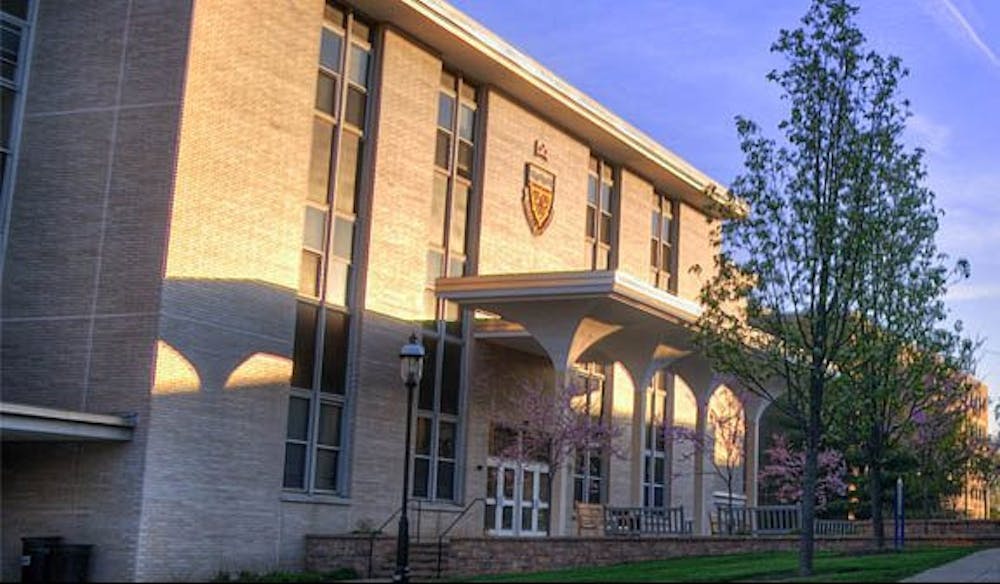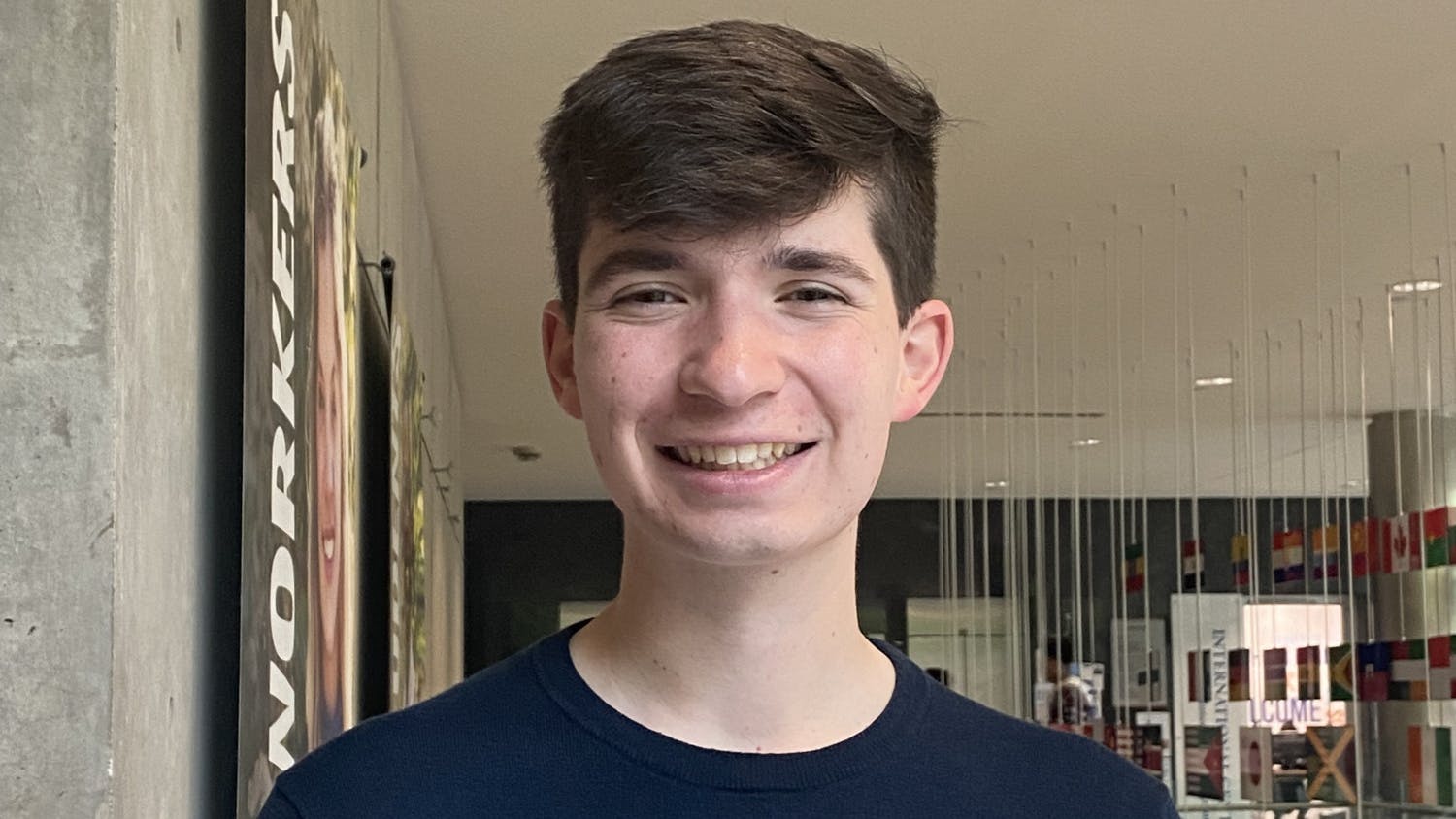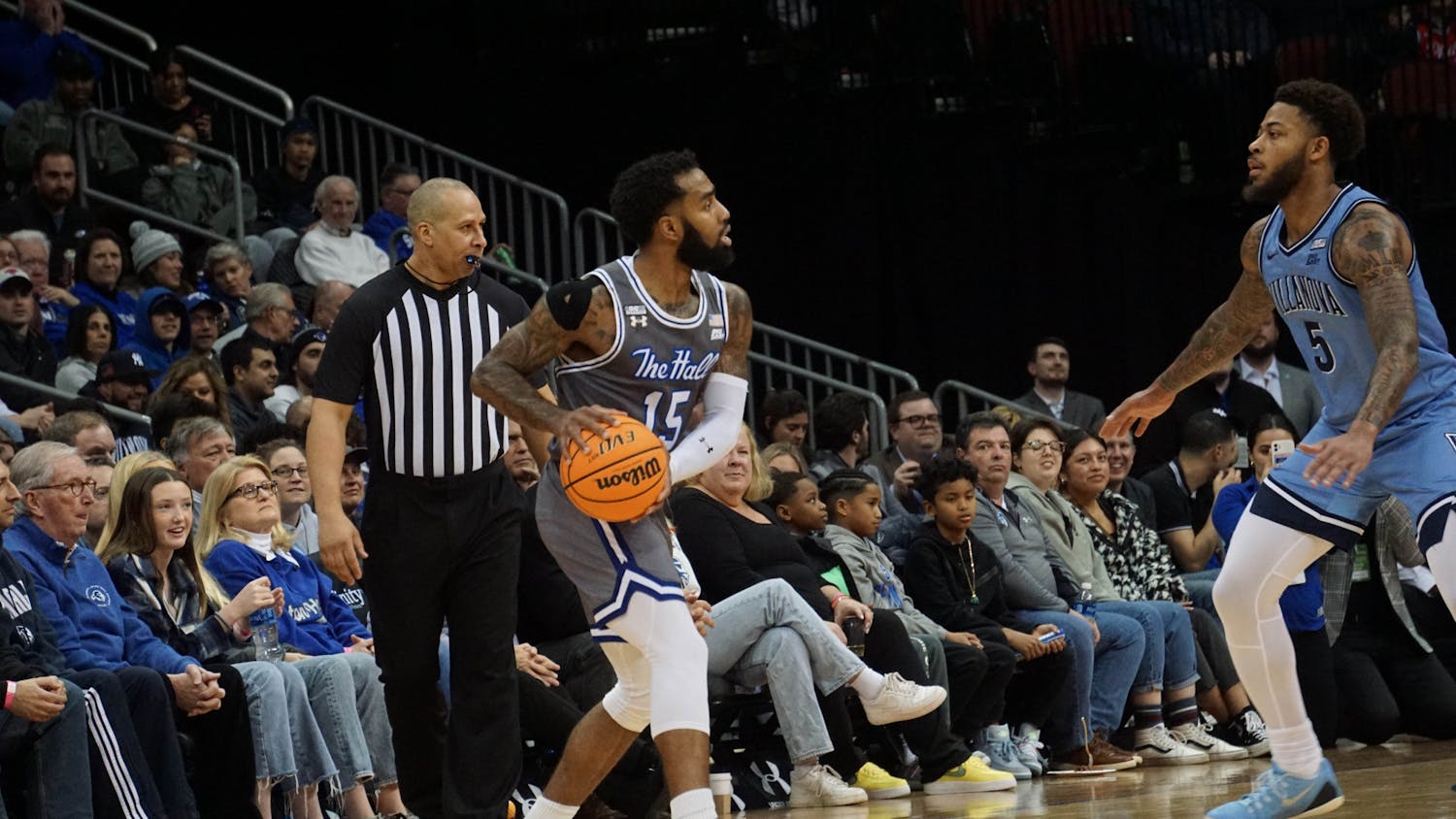[caption id="attachment_15262" align="aligncenter" width="575"] via shu.edu[/caption]
Since Dr. Peter Shoemaker was named Dean of the College of Arts and Sciences on July 1, he has been dealing with mixed opinions on the split between the College of Arts and Sciences and the College of Communication and the Arts.
While some see the creation of the new college as an opportunity, others see the divide as a loss. Shoemaker is now charged with moving forward.
Shoemaker’s initiatives so far include defining the criteria for implementation of merit pay for Seton Hall faculty. As the University is beginning to set aside a pool of money for faculty members with outstanding performance, Shoemaker says that he must decide what exactly constitutes “outstanding performance.”
Another of Shoemaker’s priorities is helping the College of Arts and Sciences, following the creation of the College of Communication and the Arts, strengthen its identity.
Shoemaker said that the split between the two colleges, both housing liberal arts majors, makes his job as dean “different.” The College of Communication and the Arts is now home to majors such as music and art history as well as journalism, and communication, while the College of Arts and Sciences houses very similar majors, such as English, history and political science.
“I think you could see arguments for having all of the disciplines together and arguments for separating them,” Shoemaker said. “We took some of those disciplines for granted in the past.”
However, Shoemaker said that the split opened up opportunities for collaboration that might have already taken place before, but now can become “formal collaborations.” Such events will receive more attention than they might have formerly received, as the attention now comes from two separate colleges.
“Now there are possibilities for talking about the relationship between performed drama and history, or journalism and public affairs,” Shoemaker added.
According to Shoemaker, Seton Hall is considering using the South Orange Performing Arts Center (SOPAC) to bring these collaborations to life in the form of performance lectures, combinations of presentations from historians and dramatic showcases.
Shoemaker would work with Dean Deirdre Yates of the College of Communication and the Arts on these projects.
Yates said that she doesn’t see the separation of the colleges as a split, but more so as an “opportunity” for collaboration.
“The College of Communication and the Arts values inter-collegial collaboration,” Yates said. “We are based in the liberal arts just as Arts and Sciences is, and we have incorporated many College of Arts and Sciences courses into our new Communication and the Arts college core. We’re quite dependent upon them for the liberal arts education of our students.”
Yates added that students can look forward to collaborative programs of study between the two colleges, such as computer science and design.
One of the ways that Shoemaker plans to feature students of the College of Arts and Sciences is through a student edited and published undergraduate research journal focusing on non-experimental, writing-intensive disciplines. These disciplines would include politics, English, and history. Shoemaker said that he hopes to implement the journal within the next year.
“I’m a big champion of undergraduate research and getting undergraduates involved in faculty research,” Shoemaker said.
According to Shoemaker, the undergraduate Dean’s Cabinet of the College of Arts and Sciences has been “charged with thinking about what it means to be a liberal arts student as opposed to a professional student, and how the experience that a liberal arts student gets is a little bit different.”
One of the challenges the Cabinet might face is deciding how to compartmentalize art.
Yates said that there is art to some extent in most disciplines, so the line cannot be clearly drawn, adding that both colleges continue to focus on the liberal arts.
“It’s hard to necessarily define art, but I think there’s artistic expression in our college that manifests itself in very specific art disciplines,” Yates said.
However, not everyone has been enthusiastic about the split between the two colleges.
Dr. Petra Chu, an art history and museum studies professor, said that while the split might be good for the communication disciplines, it was not ideal for the art history program.
“Museums deal with archaeology, anthropology, history, science, art—all disciplines that are or (in the case of art) should be located in A&S,” Chu said in an email interview. “I also believe A&S has lost out. A college of Arts and Sciences without the arts is a contradiction in terms.”
The severance has also created confusion with some students.
While the vast majority 254 students of all majors surveyed in a Facebook poll know that art majors such as theatre and journalism are found within the College of Communication and the Arts, some still think that they can be found within the College of Arts and Sciences, while others just don’t know where those majors are located.
“I think it’s a struggle sometimes in comparison with a school like the School of Diplomacy that produces diplomats, or Stillman that produces business people,” Shoemaker said. “The question is, what are you when you’re an undergraduate in the College of Arts and Sciences? It’s a somewhat more complicated story, but I feel that it’s an important (story) that students should be participants in and owners of.”
Brianna Bernath can be reached at brianna.bernath@student.shu.edu.
via shu.edu[/caption]
Since Dr. Peter Shoemaker was named Dean of the College of Arts and Sciences on July 1, he has been dealing with mixed opinions on the split between the College of Arts and Sciences and the College of Communication and the Arts.
While some see the creation of the new college as an opportunity, others see the divide as a loss. Shoemaker is now charged with moving forward.
Shoemaker’s initiatives so far include defining the criteria for implementation of merit pay for Seton Hall faculty. As the University is beginning to set aside a pool of money for faculty members with outstanding performance, Shoemaker says that he must decide what exactly constitutes “outstanding performance.”
Another of Shoemaker’s priorities is helping the College of Arts and Sciences, following the creation of the College of Communication and the Arts, strengthen its identity.
Shoemaker said that the split between the two colleges, both housing liberal arts majors, makes his job as dean “different.” The College of Communication and the Arts is now home to majors such as music and art history as well as journalism, and communication, while the College of Arts and Sciences houses very similar majors, such as English, history and political science.
“I think you could see arguments for having all of the disciplines together and arguments for separating them,” Shoemaker said. “We took some of those disciplines for granted in the past.”
However, Shoemaker said that the split opened up opportunities for collaboration that might have already taken place before, but now can become “formal collaborations.” Such events will receive more attention than they might have formerly received, as the attention now comes from two separate colleges.
“Now there are possibilities for talking about the relationship between performed drama and history, or journalism and public affairs,” Shoemaker added.
According to Shoemaker, Seton Hall is considering using the South Orange Performing Arts Center (SOPAC) to bring these collaborations to life in the form of performance lectures, combinations of presentations from historians and dramatic showcases.
Shoemaker would work with Dean Deirdre Yates of the College of Communication and the Arts on these projects.
Yates said that she doesn’t see the separation of the colleges as a split, but more so as an “opportunity” for collaboration.
“The College of Communication and the Arts values inter-collegial collaboration,” Yates said. “We are based in the liberal arts just as Arts and Sciences is, and we have incorporated many College of Arts and Sciences courses into our new Communication and the Arts college core. We’re quite dependent upon them for the liberal arts education of our students.”
Yates added that students can look forward to collaborative programs of study between the two colleges, such as computer science and design.
One of the ways that Shoemaker plans to feature students of the College of Arts and Sciences is through a student edited and published undergraduate research journal focusing on non-experimental, writing-intensive disciplines. These disciplines would include politics, English, and history. Shoemaker said that he hopes to implement the journal within the next year.
“I’m a big champion of undergraduate research and getting undergraduates involved in faculty research,” Shoemaker said.
According to Shoemaker, the undergraduate Dean’s Cabinet of the College of Arts and Sciences has been “charged with thinking about what it means to be a liberal arts student as opposed to a professional student, and how the experience that a liberal arts student gets is a little bit different.”
One of the challenges the Cabinet might face is deciding how to compartmentalize art.
Yates said that there is art to some extent in most disciplines, so the line cannot be clearly drawn, adding that both colleges continue to focus on the liberal arts.
“It’s hard to necessarily define art, but I think there’s artistic expression in our college that manifests itself in very specific art disciplines,” Yates said.
However, not everyone has been enthusiastic about the split between the two colleges.
Dr. Petra Chu, an art history and museum studies professor, said that while the split might be good for the communication disciplines, it was not ideal for the art history program.
“Museums deal with archaeology, anthropology, history, science, art—all disciplines that are or (in the case of art) should be located in A&S,” Chu said in an email interview. “I also believe A&S has lost out. A college of Arts and Sciences without the arts is a contradiction in terms.”
The severance has also created confusion with some students.
While the vast majority 254 students of all majors surveyed in a Facebook poll know that art majors such as theatre and journalism are found within the College of Communication and the Arts, some still think that they can be found within the College of Arts and Sciences, while others just don’t know where those majors are located.
“I think it’s a struggle sometimes in comparison with a school like the School of Diplomacy that produces diplomats, or Stillman that produces business people,” Shoemaker said. “The question is, what are you when you’re an undergraduate in the College of Arts and Sciences? It’s a somewhat more complicated story, but I feel that it’s an important (story) that students should be participants in and owners of.”
Brianna Bernath can be reached at brianna.bernath@student.shu.edu.





